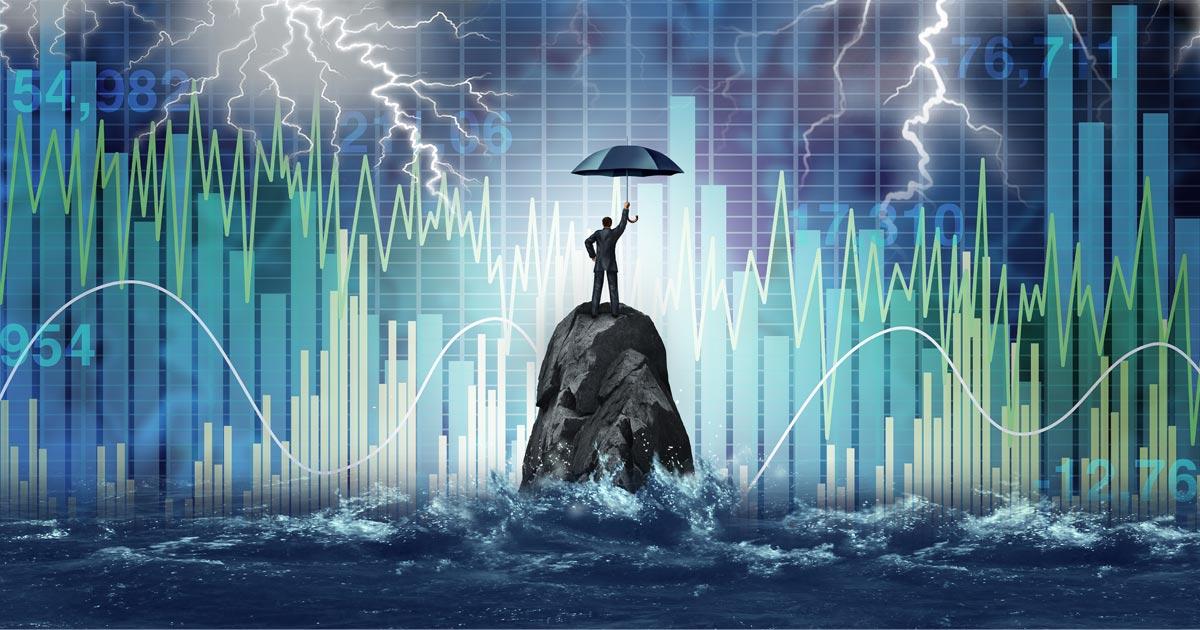
Over the present year we have experienced record-breaking price inflation, a series of interest rate hikes, and an overall fall in stock prices. It is widely accepted that there is a bubble. A good way for Misesians to measure this is by comparing the price of capital (stock prices) to its replacement cost (book value). A normal ratio for the overall market should be close to one. Such a ratio means that value is being properly imputed, and that the structure of production properly reflects real preferences and relative scarcity.
In the last quarter of 2019, when monetary policy was starting to tighten after almost a decade of near zero interest rates, the price to book ratio of the S&P 500 Index was around 3.5. That means that the calculated value you would obtain by multiplying the prices of the companies in the index by their respective number of outstanding shares was 3.5 times the value you get from adding the assets and subtracting the liabilities.
In the first quarter of 2020, as the covid panic hit, the ratio went down to around 2.9. For context, the ratio had gone down to 1.9 in the first quarter of 2009, and it took until the last quarter of 2016 to get to 2.9. With the package of covid measures, it got reinflated to over 4.7 in the last quarter of 2021. It had not been that high since 2000. It is clear that we are seeing a bubble and that it still has a long way to fall before the correction is over.
Yet, over the last two months it went up by almost 18 percent. With inflation still being a concern, the Fed clearly committed to continue to tighten, and an impending wave of bankruptcies because of rising costs and falling revenues, what are we missing? Some would have you believe that the short-term changes in the price of whole market indexes is purely random, that there are no systematic causes behind this phenomenon.
In a recent lecture for the PhD macroeconomics course at George Mason University, Professor Carlos Ramirez precisely used the S&P 500 Index as an example of a variable with lots of “white noise” in the statistical sense. I think this notion is partially flawed.
The price of the S&P 500 Index and its variance is fundamentally the result of many real actions by many real individuals. At the core of the second-by-second movement of the ticker there are real transactions. Every moment in time the actors decide anew whether to enter, hold, or exit their position, and a number of factors are relevant in making such decisions.
Price, expectations, and portfolio considerations are the most relevant. Many strategies are decided in advance and set to be executed automatically. Regardless of whether there is anything to technical analysis, the practice of trying to price movement from past data, many actors believe it works and base their strategies on it. A good portion of the funds in the market are traded by algorithms. Both relative and nominal prices are important. The price of an asset relative to other assets, relative to consumption prices, and relative to the capital replacement cost and what those relative prices might be in the future are determining factors of the best investment strategies involving that asset.
Nominal prices play a role in portfolio considerations, and they matter because deployable cash balances are nominal amounts of money, and contractual obligations are commonly set in nominal terms. The composition and behavior of the rest of an actor’s portfolio plays a role in the decision as well.
This is a case of the seen and the unseen. We see stock prices going up when we would expect them to go down. We overlook that many actors had bet against the market early on by borrowing stocks and selling them, and during the past two months decided to buy the stocks that they owed back and realize their profits or losses.
My argument is not about random stock pickers beating hedge fund managers. In the context of prevalent monetary policy asset values are regularly distorted. The monkey with the darts can beat the expensive advisor if from the beginning to the end of the period being measured the monkey’s picks increased more on average, regardless of what happened in between, regardless of whether the path between point a and point b was smooth or turbulent.
My point is that there are systematic causes behind the turbulence; it doesn’t simply manifest out of the ether as random patterns do. All the different types of actors have their different strategies that interact and result in the dynamic of the stock market. Thus, though it may sometimes feel like it, short-term market volatility is not random, it’s just very complex.








